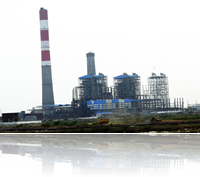
The Kerala Cabinet has approved a Solar Energy Policy that seeks to raise installed capacity of the solar sector to 500 MW by 2017 and 1,500 MW by 2030. The mission is to contribute to long-term energy security of the State well as ecological security by reduction in carbon emissions.
Chief Minister Oommen Chandy told newspersons here that the draft policy had been posted on the website of the Agency for Non-Conventional Energy and Rural Technology.
Comments received from stakeholders, including the general public, have been incorporated to the final document.
Land suitable for development of solar installations in the possession of either Government or private individuals will be identified, as per the original draft.
Such identified lands shall be offered to developers for grid connected solar installations.
Lease rentals fixed by revenue department shall be payable to the land owner. Only lands which do not have an immediate productive use shall be thus identified.
FEED-IN TARIFF
In the case of offsite commercial installations, the State Electricity Regulatory Commission will notify the normative feed-in tariff of solar power for procurement by State power utility.
Feed-in tariff refers to payments made out to ordinary energy users for renewable electricity generated by them.
Net metering shall be applicable for all agencies that consume grid power and have installed solar installations with some form of Government subsidy.
Special feed-in tariff will be made applicable for consumers with monthly consumption of 30 units and below.
For off grid systems, the policy seeks to ensure bank finance at attractive rates and provide generation-based incentives. Existing capital subsidies shall be restructured appropriately.
GENERATION FACILITIES
For grid connected systems, the Government would initiate a programme by which all public buildings are provided with generation facilities using appropriate technology options.
The policy urges all concerned to make use of the rooftop and premises to install solar plants to match maximum demand within a period of two years.
Grid connected systems will be promoted for domestic consumers in a phased manner after formulating grid connection standards for LT distribution.
In this regard cluster-wise installations will be given suitable incentives on a conditional basis for adopting solar installations.

















